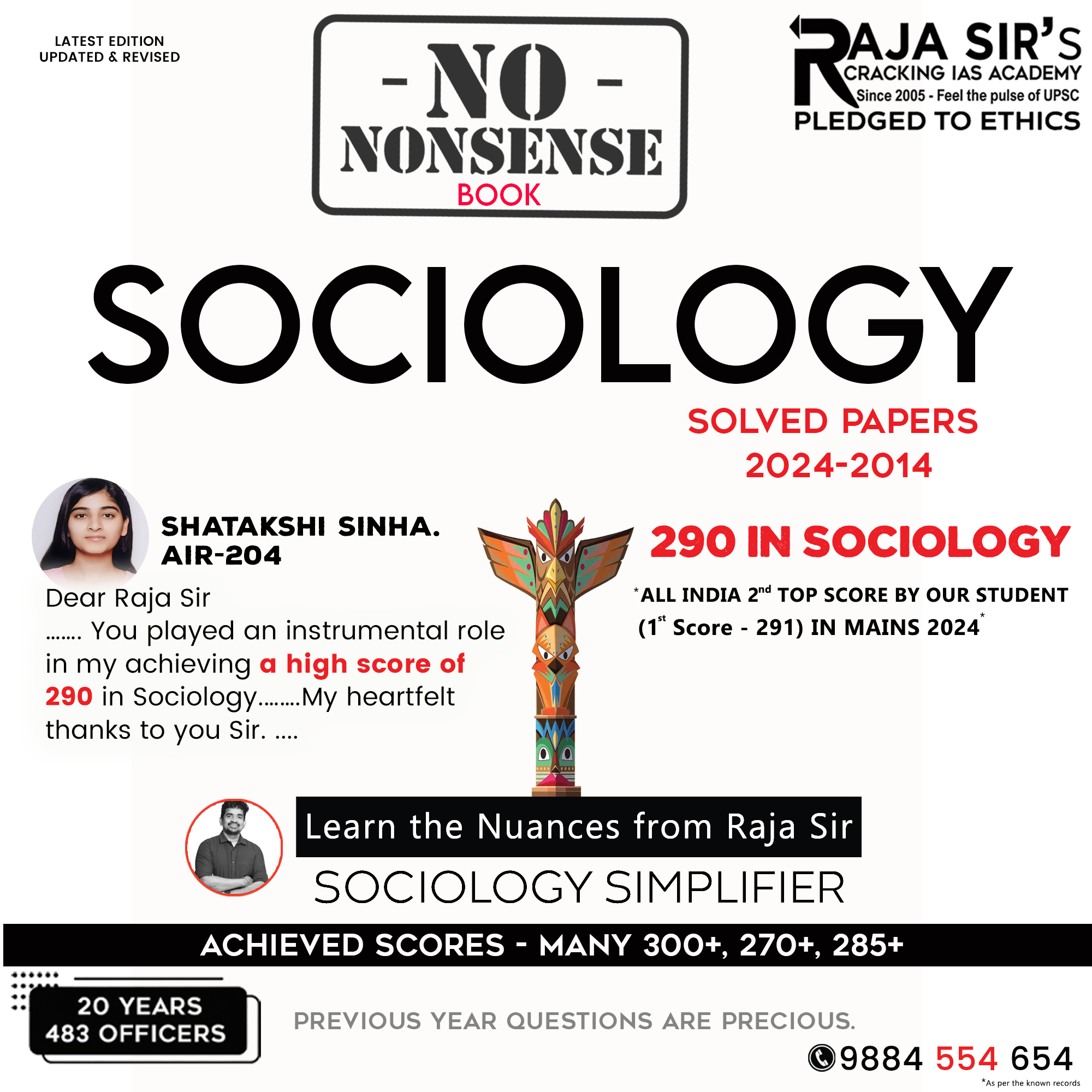- Home
- Prelims
- Mains
- Current Affairs
- Study Materials
- Test Series
 Latest News
Latest News
Mobility within the caste system in India is limited, but not entirely absent. Comment. Sociology - Mains Daily Answer writing Practice (20 Marks)

Indian caste society has undergone tremendous transformation in modern days, and is still undergoing adaptive changes. M.N. Srinivas quite aptly referred to the changes brought about in independent India. In independent India, the provision of Constitutional safeguards to the backward sections of the population, especially the Scheduled Castes and Tribes, has given a new lease of life to caste. Many factors have been responsible for the transformation in caste system.
M.N. Srinivas draws out a distinction between traditional and modern caste which roughly coincides with the distinction between pre-British and Post-British period. It was indeed a matter of great significance to learn about the nature of rendering political power to Indians by the British. This was an important step in caste assuming political functions. There were territorial boundaries in the preBritish period which separated the castes by limiting their mobility. But later on the interdependence of castes upon each other for economic and other functions somehow became instrumental in liberating caste from territorial filiations.
Srinivas also refers to the building of roads all over India, the introduction of postage, telegraph, cheap paper and printing - especially in regional languages enabled castes to organize as they had never done before.
Ghurye has also reflected upon the impact of British rule on the Indian Caste system. The civil and penal codes introduced by the British over the subcontinent took away much of the power previously exercised by Caste Panchayats. However, the process of Sanskritization has also been instrumental in bringing about social mobility leading to fluidity in the caste structure.
Other factors like Western education, urbanization, industrialization and the new legal system further contributed in bringing about changes in the caste system. The expansion of industries and service sectors have led to expansion of occupational opportunities to many castes. So in spite of the ascribed status assigned to castes, people focussed on achieved status. Such occupational spaces have led to the abandonment of the principles of pollution and purity. Moreover, democratic decentralization of power right upto grassroots level has led to increased participation in the political process and besides economic success, access to political power has become another means of status enhancement.
Some of the prominent changes identified in the caste system are as follows:
- There has been a decline in the supremacy of Brahmins. The Brahmins who used to occupy topmost position in the stratification system of India are no longer considered so. Modern occupation and urbanization has led to increased occupational mobility among other castes which has enhanced the status of castes lower than the Brahmins in the hierarchy. In the present day context the Weberian notion of one’s class position gains ascendancy over one’s caste position.
- The jajmani system has also weakened. The economic context of intercaste relations which is termed as jajmani system has lost its significance. The monetization of economy and expansion of market system in rural areas has had a severe impact on the economic functions of castes.
- The second important change is the position of castes due to processes like Sanskritization. Initially, it was observed that caste system had a rigid structure that strictly prohibited social mobility. But with occupational interdependence and opening of greater avenues for employment, the lower castes had an opportunity to pursue an occupation according to their choice. This led to fluidity in the caste structure and considerable positional changes were observed.
- The Protective Discrimination Policy of the Government further led to the enhancement of status of many of the subjugated castes. Such policies also led to the improvement in socio-economic conditions of various castes.
- The enforcement of the Special Marriage Act of 1954 further brought about many changes in improving the marital alliances among the castes. Initially endogamy was strictly observed as an attribute of caste and people violating it were ostracized from the village. But the Special Marriage Act legalized inter-caste marriages which is a significant change in the entire system.
- The notion of pollution and purity and restrictions on feeding and intercourse are no longer valid. The enactment of Untouchability Offences Act 1956 was an important milestone in this direction. Untouchability was considered a punishable offence and a person found practising it is severely punished either in terms of being fined or sentenced to imprisonment.
- With industrialization, new occupational structures have developed in urban areas. These new occupations are caste free occupations. Recruitments to these occupations are solely based upon technical skills which can be acquired through modern education only. Thus the traditional concept of caste occupation has lost its significance.
- Contemporary society is undergoing massive transformation due to technological breakthrough and is witnessing many cultural changes. A new class of lower caste urban youth whom some scholars have termed the ‘breakthrough generation’ are playing a significant role in bringing about a sea-change by breaking the boundaries that had kept the Sudras in conditions of extreme poverty. This new generation of educated Sudras are positioning themselves for modern urban jobs.
Thus, the caste system has undergone many changes in the recent years. It is however difficult to predict the complete disappearance of such a system. It can be said that though there has been enough fluidity in the system due to many forces, the system still persists in India. The practice of politics through caste, the entire reservation issue and the recent debate about calculation of caste census has further stirred caste sentiments.












 General Studies
General Studies